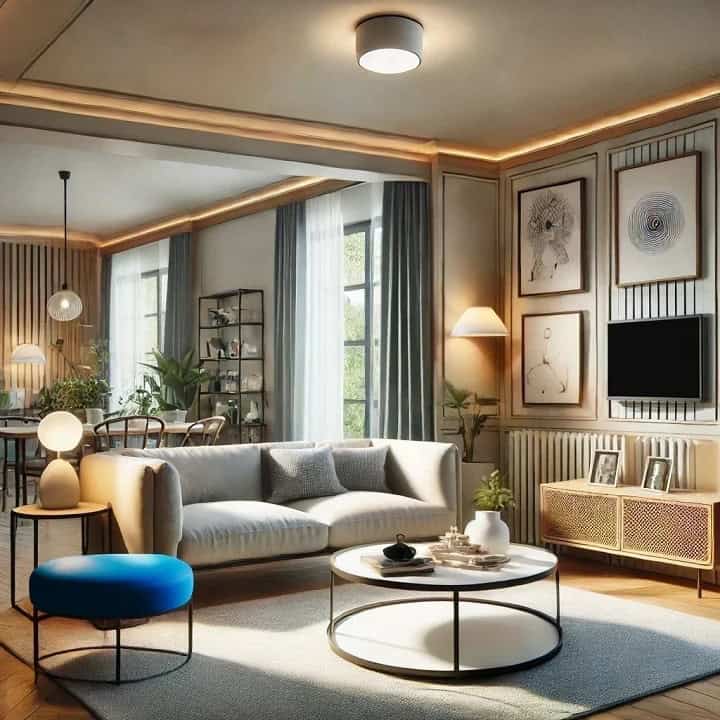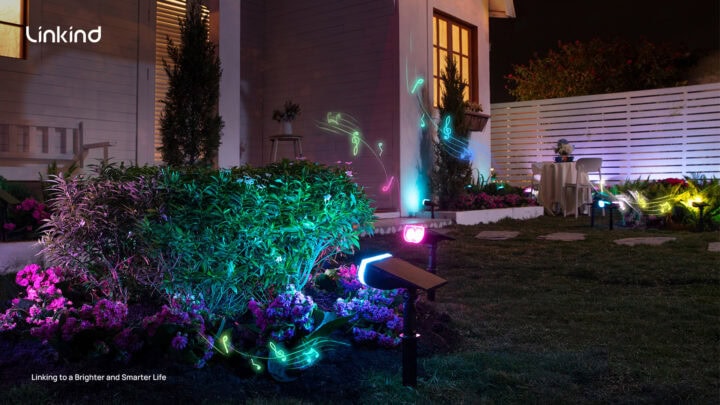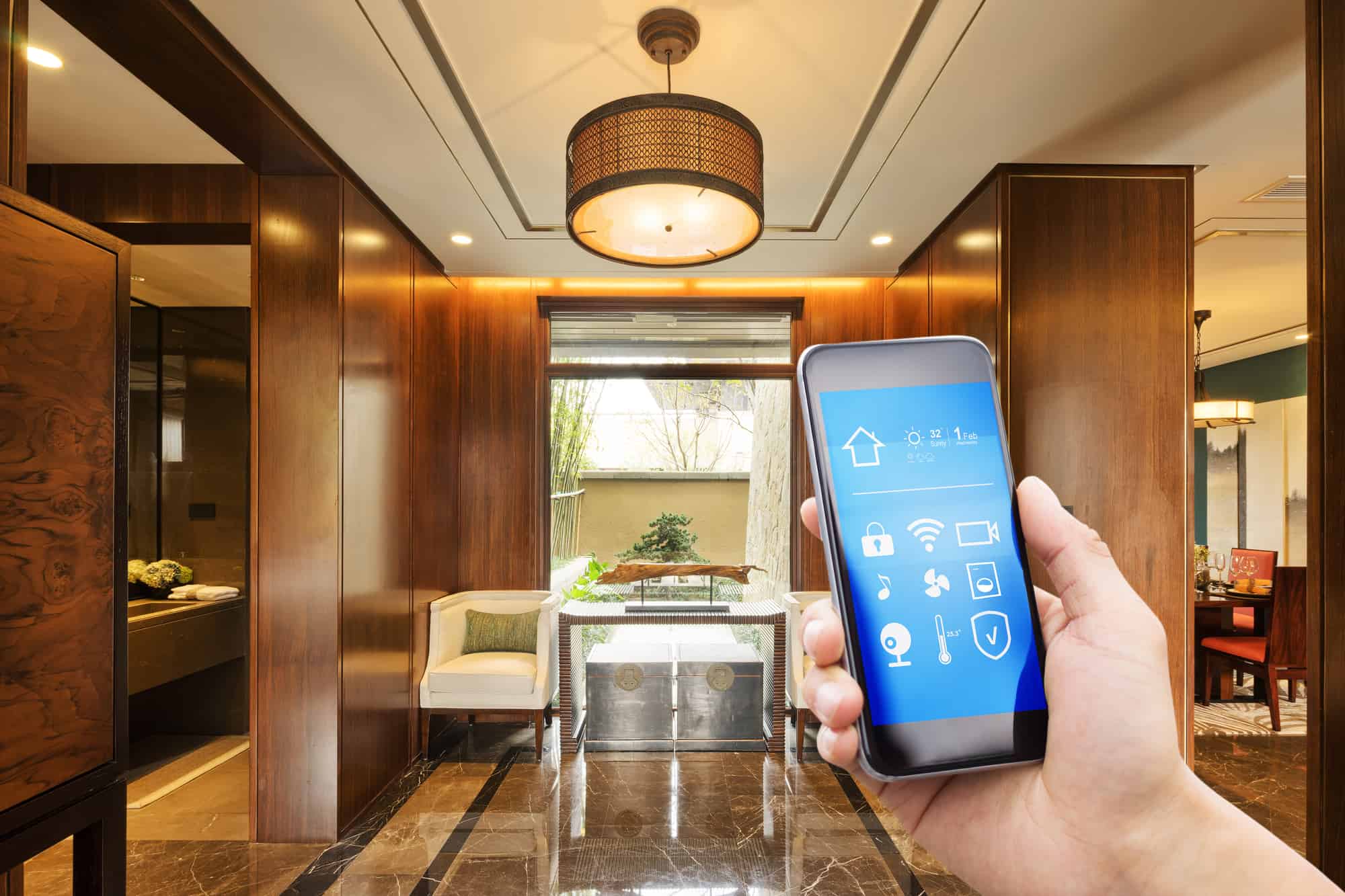Upgrading and automating your home lighting with a smart home can bring convenience and efficiency to your daily routine. This post will guide you through the process of adding smart bulbs, smart switches, smart outlets, and other smart tools into your home. This post will help you understand the basics and offer tips for a smooth installation and setup process for automating your home’s lights.
Choosing Your Smart Home Lighting
When choosing smart home lighting, it is important to understand the different types of smart lighting products available. Some common types include smart bulbs, smart switches, and smart plugs.
Smart Bulbs
Smart bulbs can be controlled through an app or voice commands, allowing you to adjust brightness and color. These are the easiest type of smart light to install – simply replace an existing light bulb with your new smart bulb. However, if the light fixture that these are installed in is turned off, then the smart bulb won’t work since it needs electricity.
Smart Plugs
Smart plugs can turn regular lamps into smart lamps by plugging them into an outlet that can be controlled remotely. These can take a little bit more effort to install than a smart bulb since you will need access to the outlet you want to put them in. Instead of replacing the bulb in an existing light fixture, you would instead plug this smart plug into the wall, then plug your light fixture into it. This allows the smart plug to control power to your light fixture, turning it off and on.
Smart Switches
Smart switches replace traditional wall switches and can control existing lights. Smart switches are much more complex to install than smart bulbs or smart plugs. Smart switches replace your existing light switches with a new, smart model. This means messing with your home’s electrical wiring and playing with mains power. If this isn’t something you are comfortable doing, it is best to hire an electrician to install smart switches for you or to skip them.
Make Sure It’s Compatible
While most smart home lights have manufacturer apps that allow you to setup basic automation for the devices, we recommend using your new smart lights with a smart home controller. With a smart home controller, the most important thing is to make sure your devices are compatible. Popular smart home controllers include Amazon Alexa, Google Assistant, and Apple HomeKit. It is important to ensure that the smart lighting products you choose are compatible with your preferred controller. This will allow you to manage your lights using voice commands or through a unified app, providing a seamless smart home experience.
Most smart devices have a list or images of compatible controllers on them. If you don’t see your controller on a specific device, you should skip it and go with something that does say it’s compatible.
How to Automate Your Home Lighting with a Smart Home
Once you have your new smart devices installed, it’s time to set them up with your controller and start automating.
Connect your Smart Device to the Controller
Connecting smart devices to smart home controllers is usually a straightforward process. For most devices, we find that the very first thing to do is to set it up with the manufacturer’s app. This lets you set the wifi or other network that the device will be communicating on, as well as registering the device to your account. Some manufacturer apps will allow you to setup basic automations, but we recommend skipping that in lieu of your controller. Having all of your automations centralized to a controller makes them easier to maintain in the future.
Once your new smart device is hooked to the manufacturer app, you should be able to add it to your smart home controller. Go to your smart home controller’s area for adding new devices and browse for either the device type or the manufacturer of your device to add it in.
Setup your Automations
Finally, setup the automations for your new smart light in your smart home controller. This process can range wildly depending on which smart home controller you have. Some smart home controllers only allow you to do basic automations – turn a light on or off at a set time. Others can allow you to script out commands and have complex routines and triggers for your new smart home lights.
Our preferred basic light automations are to turn the lights on about an hour before sunset, then to slowly turn lights off starting at around 10pm as people go to sleep. In the winter, we also have certain lights come on early in the morning, since the sun may not be up yet.
FAQ
What are the best smart lighting systems available for home automation?
The best smart lighting systems available for home automation are Philips Hue, LIFX, and TP-Link Kasa. Philips Hue offers a wide range of bulbs, light strips, and accessories that can be controlled via an app or voice commands through smart assistants like Alexa, Google Assistant, and Apple HomeKit. LIFX provides high-quality, Wi-Fi-enabled bulbs that do not require a separate hub and offer a variety of colors and settings. TP-Link Kasa is known for its affordable yet reliable smart lighting solutions that integrate well with other smart home devices. Each system has its own strengths, so the choice may depend on specific needs and existing smart home setups.
Can I control my smart lighting with voice commands using a virtual assistant?
Yes, you can control your smart lighting with voice commands using a virtual assistant. Most smart lighting systems are compatible with popular virtual assistants like Amazon Alexa, Google Assistant, and Apple Siri. To use voice commands, you need to connect your smart lighting system to your virtual assistant’s app. Once set up, you can issue commands such as turning lights on or off, dimming them, or changing colors if your bulbs support that feature. This allows for hands-free control of your home lighting, adding convenience to your daily routines.
Is it possible to integrate smart lighting with other smart home devices and systems?
Yes, it is possible to integrate smart lighting with other smart home devices and systems depending on your smart home controller. Many smart lighting systems can connect with other smart devices such as presence detectors, security cameras, and voice assistants through a central hub or smart home platform. This integration allows users to control multiple devices from a single app or interface. For example, you can set your lights to turn on when your security camera detects motion. The key is to ensure that your devices are compatible with the same smart home ecosystem, like Google Home, Amazon Alexa, or Apple HomeKit.
In Summary
Automating your home lighting with smart home technology can offer convenience and efficiency. By setting up smart bulbs, switches, and using apps or voice assistants, you can control your lights remotely and create schedules that suit your lifestyle. This can help save energy and enhance the comfort of your living space. While the initial setup may require some investment and time, the long-term benefits can make it worthwhile. Overall, integrating smart lighting into your home can lead to a more manageable and adaptable environment.




